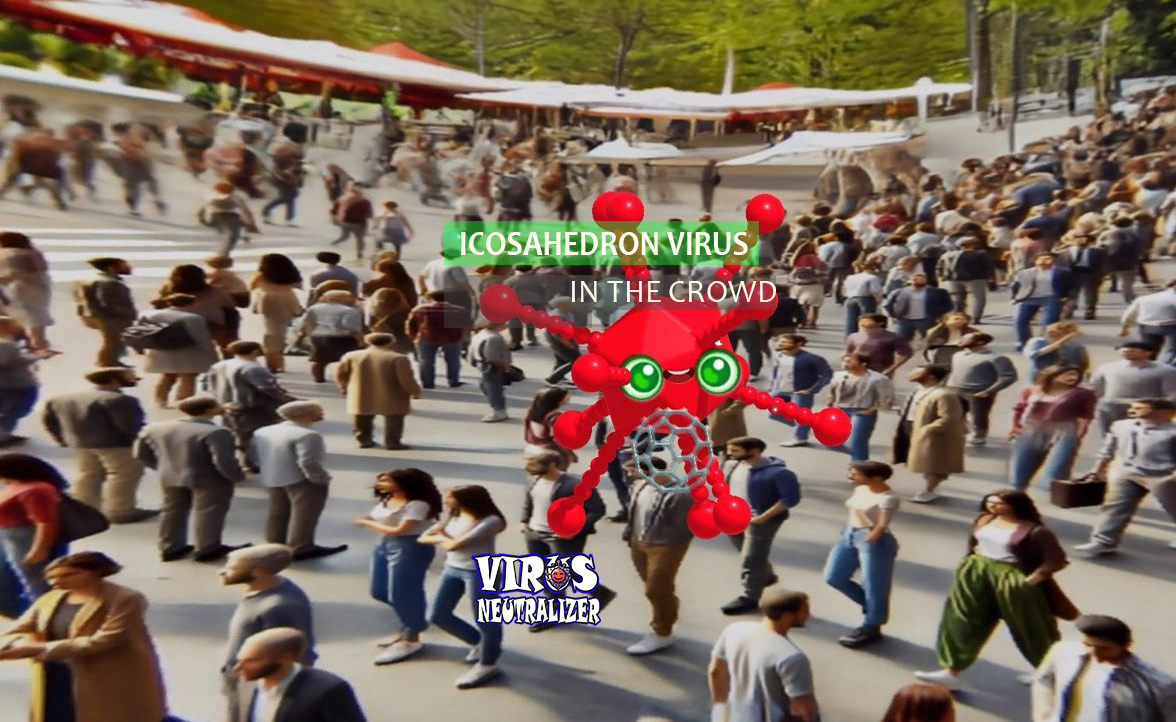Icosahedral Viruses: Resilient Pathogens Shaping Health and Gaming
30 Nov 2024

Icosahedral viruses, or icosahedral viruses, are one of the most common and studied types of viruses. They have high symmetry and a robust structure consisting of 20 triangular faces, making them resistant and effective in penetrating host cells. In computer games, such viruses are often depicted as enemies to be destroyed or as objects for research and study, allowing players to immerse themselves in the world of microbiology and virology. In real life, icosahedral viruses play a significant role in medicine and agriculture, as they can cause various diseases in plants and animals, including humans.
Main features of icosahedral viruses
One of the main features of icosahedral viruses is their geometric structure, which provides them with stability and protects the genetic material inside the virus. This shape allows viruses to easily penetrate host cells and spread effectively inside the body. Under a microscope, icosahedral viruses are easily recognized by their characteristic geometry. These viruses often have a capsid made up of proteins that surround and protect their genetic material.
Icosahedral viruses and diseases
In real life, icosahedral viruses can cause a variety of diseases. One of the most well-known representatives is the influenza virus, which causes epidemics every year and affects millions of people around the world. Another important representative is the herpes virus (Herpes simplex virus), which causes chronic infections of the skin and mucous membranes. In plants, icosahedral viruses, such as the tobacco mosaic virus, can cause serious damage and reduced yields, causing characteristic spots on leaves and deterioration in the general condition of the plants.
The main methods of prevention
To combat icosahedral viruses, an integrated approach is needed. The main methods of preventing viral infections are vaccination and compliance with hygiene standards. Vaccination allows the body to develop immunity to the virus, which prevents the development of the disease. Antiviral drugs are used to combat already developed infections, which can block the reproduction of the virus in the body. Sanitary measures such as regular hand washing, surface disinfection, and avoiding contact with infected people also play an important role.
In agriculture, the fight against viral plant diseases includes the use of resistant varieties, timely removal of infected plants, and the use of biological and chemical means of protection. These measures reduce the spread of viruses and minimize crop losses.
Conclusion
Thus, icosahedral viruses are an important object of study both in computer games and in real life. Understanding their characteristics, diagnostic methods, and ways to combat them allows us to effectively prevent and treat diseases caused by these viruses, protecting the health of plants, animals, and humans. Effective control of viral infections requires an integrated approach that includes both preventive measures and medical treatment.
Related games
Related news
🦠 Virus Neutralizer — Become a microscopic hero! 🔬 Live ga...
In this science and entertainment broadcast, you will see how you can fight viruses, bacteria and fungi in the most unexpected places - from the kitchen to space - in a fun and effective way.
Read moreMulticellular fungi: benefits, threats and their reflection...
Multicellular fungi are a diverse group of organisms that play an important role in ecosystems, industry, and human life...
Read moreSingle-celled fungi: beneficial, pathogenic and their reflec...
Unicellular fungi are amazing organisms that combine the simplicity of their structure and the complexity of their inter...
Read more




